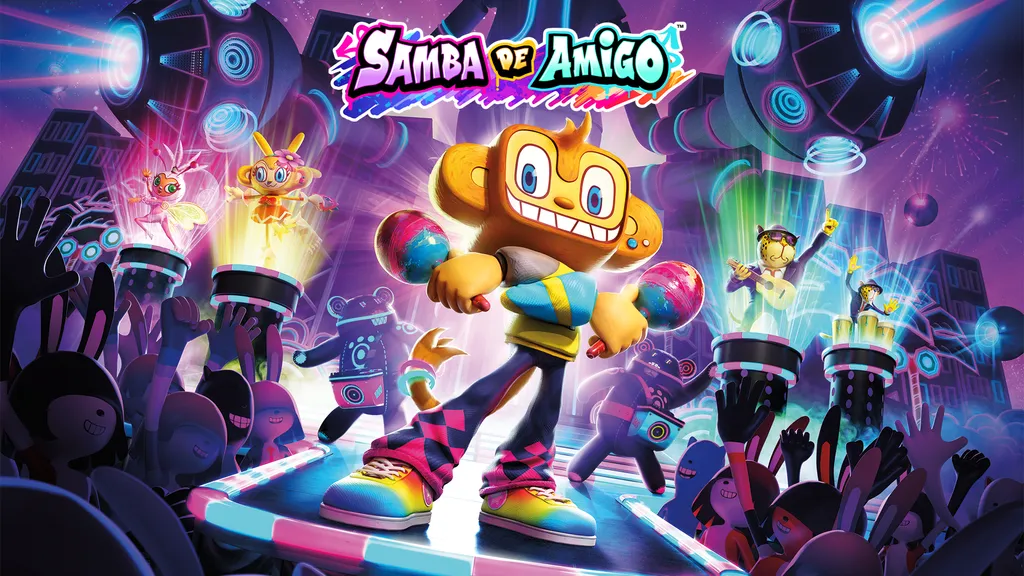Samba De Amigo brings the iconic rhythm game to Quest 2 this fall, and we spoke with SEGA Producer Shun Nakamura to learn more.
Following February's announcement of Party Central on Nintendo Switch, Samba De Amigo is a new VR take on SEGA's Dreamcast classic. Switching to first-person gameplay, the Quest 2 version sees you matching on-screen patterns and poses inline with the rhythm, swapping maracas for Touch Controllers. Supporting solo play and online multiplayer, you can watch the reveal trailer below:
Featuring over 40 songs, Samba De Amigo focuses more on worldwide genres than the original's Latin American music. It's also the first full VR game published by SEGA, excluding minor PSVR support for the Persona 3 and 5 Dancing spin-offs. Several games initially published by SEGA later came to VR, such as Space Channel 5 and Rez Infinite, but were handled by separate publishers.
Curious to learn what SEGA is planning, Nakamura-san was happy to answer our questions over email. With 24 years separating these entries, I asked what led to SEGA creating a sequel now. "Samba de Amigo was the first title that I directed, and one that I wanted to create again if I had the chance. I was also very interested in VR hardware and wanted to challenge myself as a creator," he replies, citing recent trends across gaming to revive past IPs.
I thought this might be a good opportunity, so I proposed reviving the IP and was able to take on the challenge. There are many dark stories in the world, and we worked together as a team to create this title, hoping that players would forget about the bad things going on around the world and just become happy. The gaming industry has developed since then and there are many different games to this day, so we were being careful to keep the spirit of the original work and adapt it to the modern age.
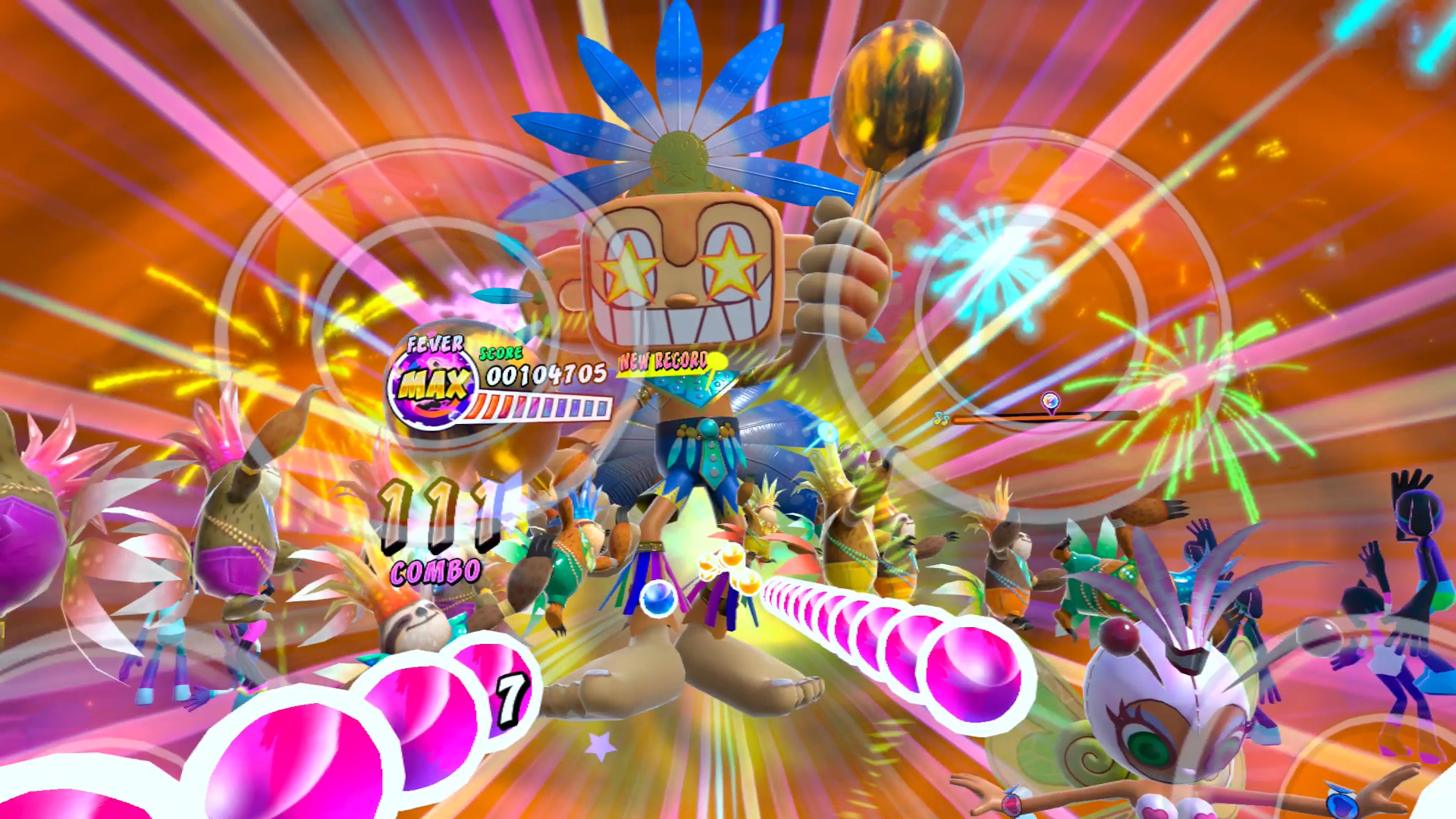
Moving onto the sequel's soundtrack, I was curious about the more international selection. With artists including Miley Cyrus and Bon Jovi, I queried this shift and Nakamura-san starts by detailing the original's development. "The very first Samba de Amigo came to mind from the title name, and based on the concept of bright and fun, we selected music that everyone had heard of before in Japan but had a bright and groovy feel to it, without considering the overseas market."
For this entry, the team incorporated songs from various genres "to keep up with current trends" and to express that "Amigo itself has gone beyond its past works to provide a worldwide groove." However, he reassures me that "all of the songs are great songs that will get you in the “groove” and make you dance along. We are sure you will like them and feel the soul of Samba."
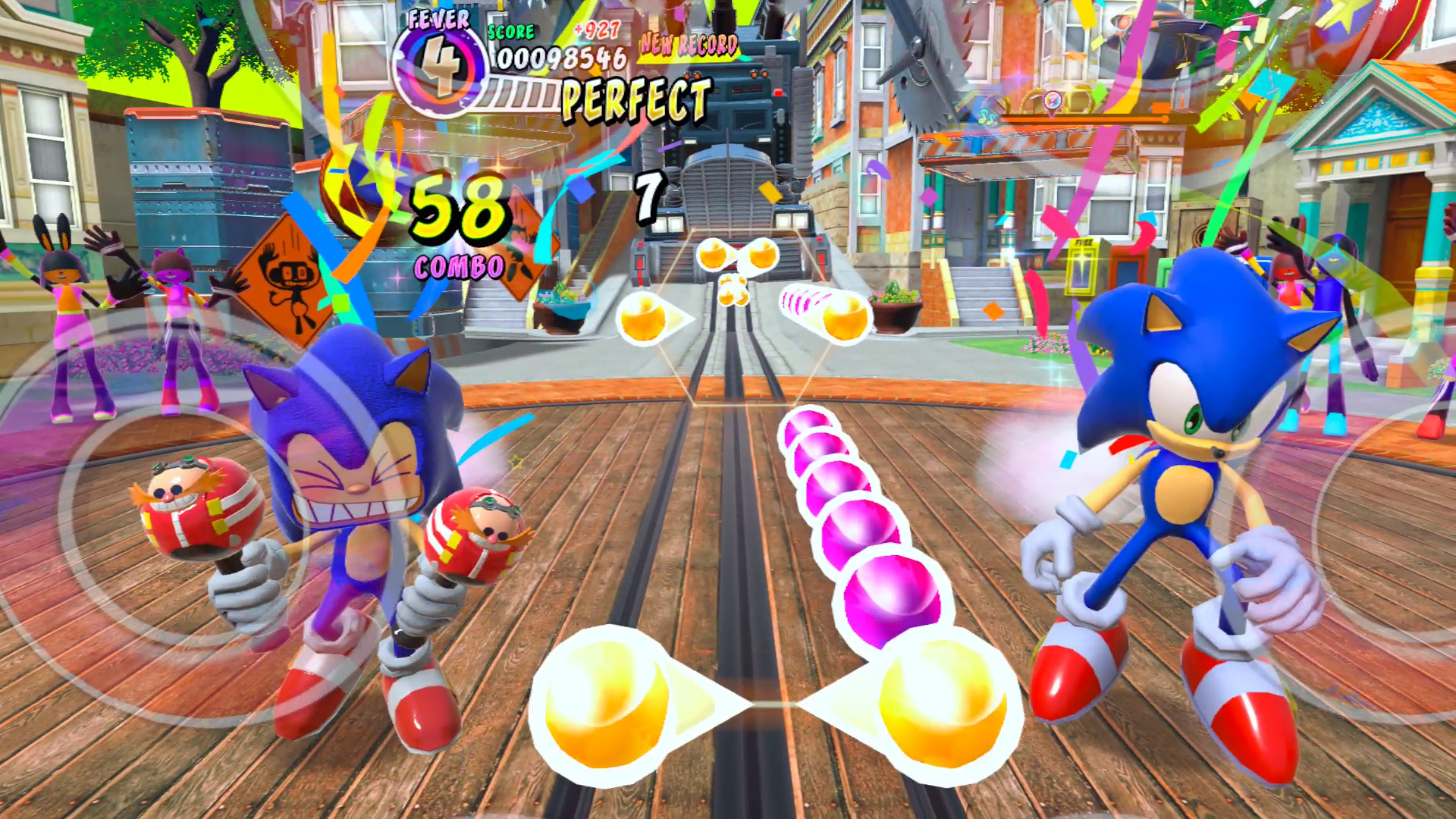
Given that it's been seven years since the Rift, Vive and PSVR kicked off modern VR, I questioned why SEGA chose now to fully venture into VR. Nakamura-san stresses the importance of choosing the right platform for games, telling me how Samba De Amigo being "very dynamic" is one reason why they chose Quest 2. "My thought from the very beginning for this project was that Samba de Amigo was an appropriate title for VR, both in terms of the basic game system and visuals."
Asking if there's content parity between the upcoming Quest and Switch versions of the game , Nakamura-san revealed they "are not exactly the same." While he can't currently confirm differences, he says that the team has "prepared some things that Quest players will enjoy." That said, I'm told the underlying game concept remains the same, though he doesn't confirm any performance benefits on Quest Pro.
Though Nakamura-san calls the VR experience "a must-see for those who want to experience the unique features of Samba," he stated plainly the difficulties in translating the gameplay to a first-person perspective on Quest compared to Switch.
This was very difficult, and I struggled a lot. In Samba, there are six frames that are icons which follow the user's movements, but in VR, these frames are right in front of the user's eyes, and people have very different preferences in terms of distance. In addition, it was difficult to get the timing just right for the notes coming from the back to the front. As for the differences in gameplay between the Switch, the concept of the game being fun and groovy is exactly the same, but the Samba features, such as the world becoming more exciting if you keep playing well, are very different.
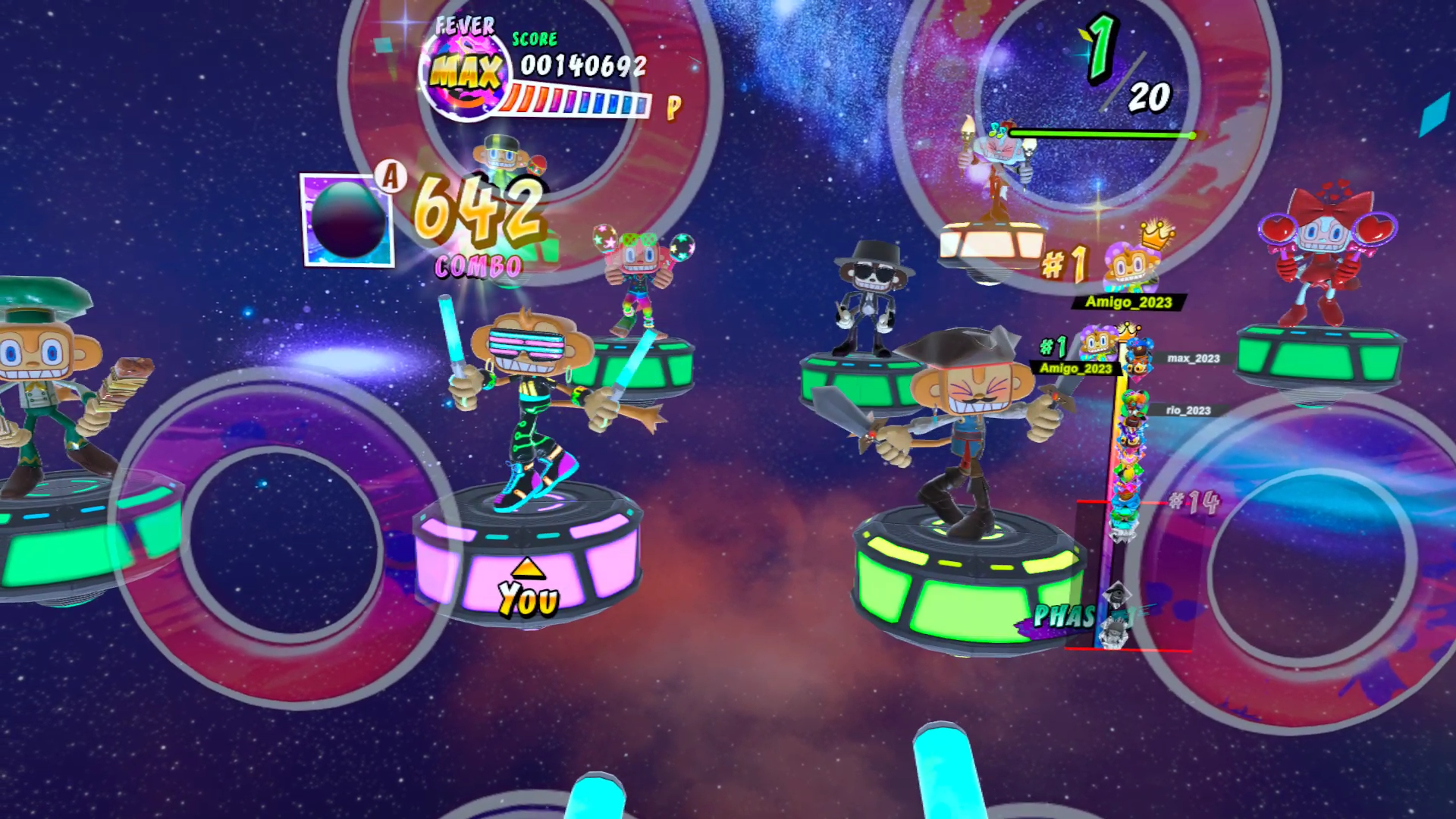
Despite seeing "many other VR rhythm games," Nakamura-san informs me that the team didn't look at them during development, since they were working off the original game's framework. I'm told that he initially had "no knowledge of VR (in comparison to rhythm games)" but did "a lot of research" on the expressions and mannerisms of other VR games to compensate. He also calls TikTok "a major inspiration" on gameplay before discussing new elements like "happenings," which he considers "similar to the modern scene where young people get into the groove of the music and have fun."
Rounding this out, I finished by asking if there's any SEGA game he would choose to bring to VR next. Nakamura-san doesn't directly answer, though he says he can feel the potential of VR now more than ever. "I am excited to see that Sega's various IPs will be able to offer a different kind of fun by moving into VR," he responds, telling me that he's looking forward to seeing the reception to Samba de Amigo first.
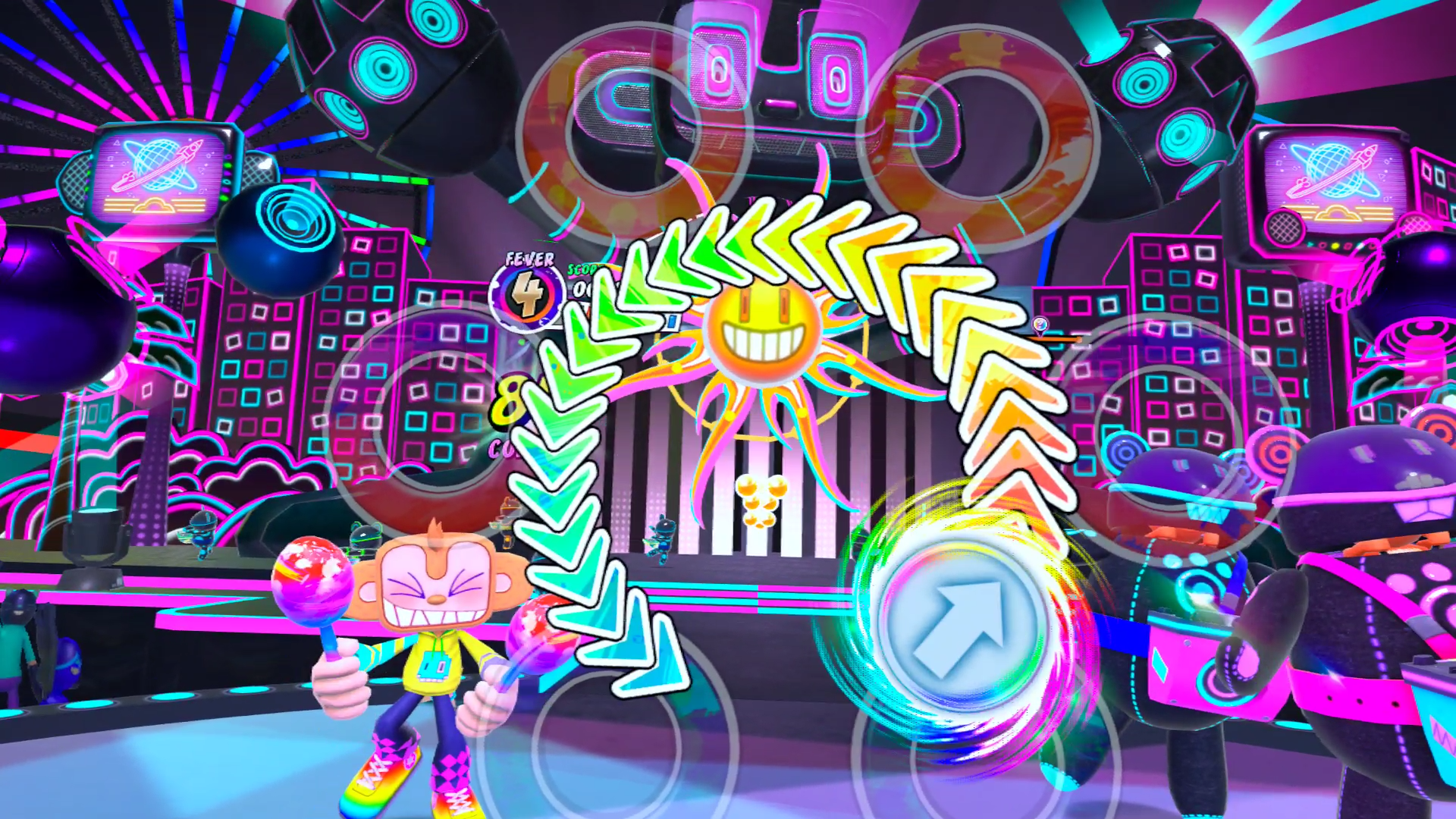
Samba De Amigo arrives in Fall 2023 on Quest 2 and Quest Pro, as well as the newly-announced Quest 3 after it ships later this year. Anyone who pre-orders Samba De Amigo will receive two in-game accessories: a Quest 2 VR headset and Quest controllers that replace the maracas.
For further information, you can find the full Q&A below:
UploadVR: First, thank you for taking my questions. I'd like to ask about Party Central's development. It's been nearly 24 years since the first game and, Wii port aside, this is the first time Samba de Amigo has received a sequel. How did this come about, and why create a follow-up now after so long?
Nakamura: Samba de Amigo was the first title that I directed, and one that I wanted to create again if I had the chance. I was also very interested in VR hardware and wanted to challenge myself as a creator. In addition, there was a big trend in the gaming industry to revive past IPs, and I thought this might be a good opportunity, so I proposed reviving the IP and was able to take on the challenge.
There are many dark stories in the world, and we worked together as a team to create this title, hoping that players would forget about the bad things going on around the world and just become happy. The gaming industry has developed since then and there are many different games to this day, so we were being careful to keep the spirit of the original work and adapt it to the modern age.
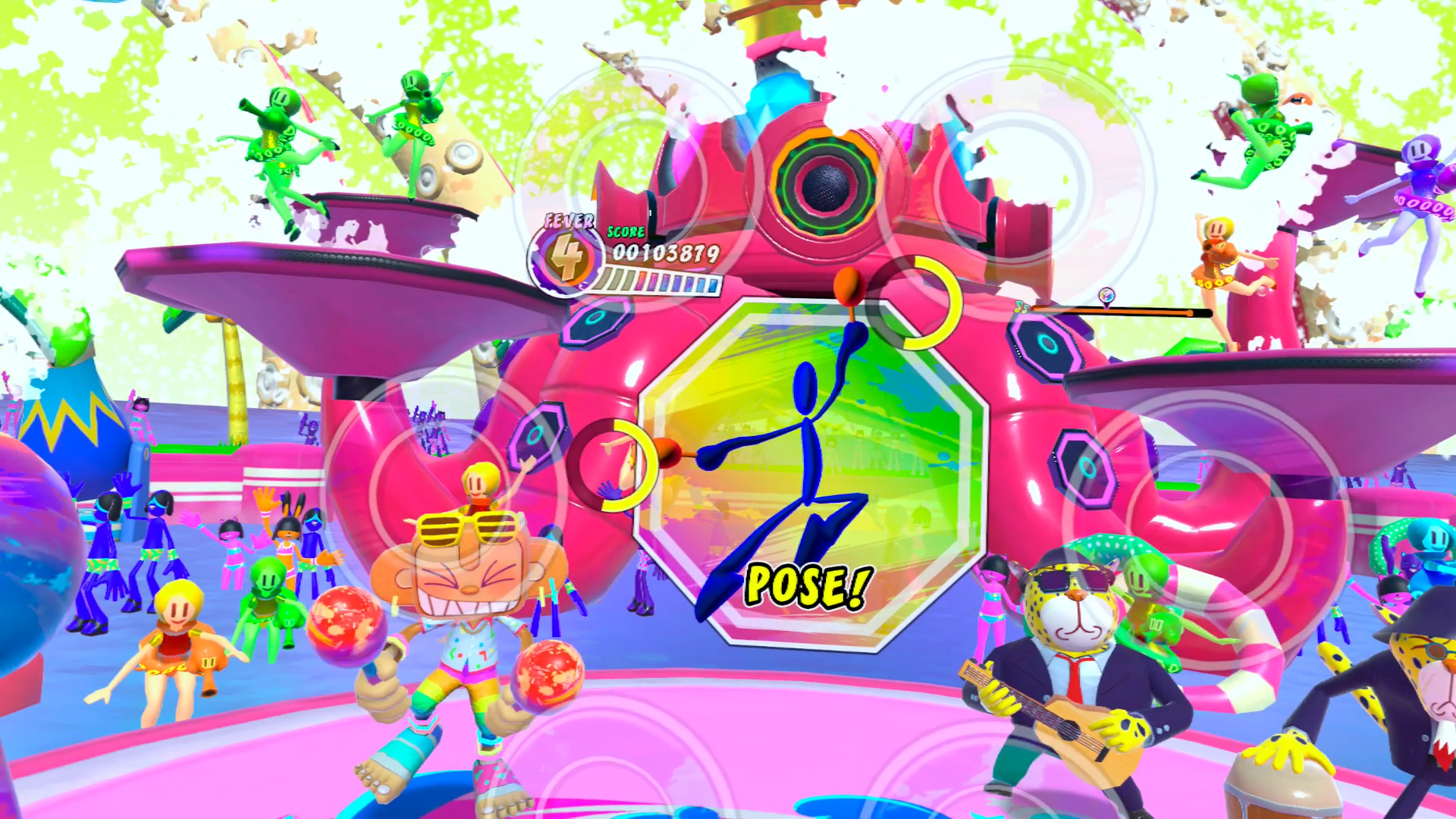
UploadVR: The original game focused largely on Latin American music, but Party Central is more international in its selections. What brought about this direction shift?
Nakamura: The very first Samba de Amigo came to mind from the title name, and based on the concept of bright and fun, we selected music that everyone had heard of before in Japan but had a bright and groovy feel to it, without considering the overseas market. As you may or may not know, this original title started out as a truly experimental title, so it was a game that was completed in one fell swoop by a team with little experience in game production.
For this game’s album, we decided to incorporate songs from a variety of genres in order to keep up with current trends and to express that Amigo itself has gone beyond its past works to provide a worldwide groove to people around the world, given that it became popular in the previous albums and has spread its wings around the world. But don't worry, all of the songs are great songs that will get you in the “groove” and make you dance along. We are sure you will like them and feel the soul of Samba.
UploadVR: Historical devices like SEGA VR aside, what convinced SEGA to venture into VR now? We've seen games initially published by SEGA like Rez get ported to VR by other publishers, but never direct publishing by yourselves.
Nakamura: It is difficult for me to answer about the past or SEGA as a whole, but my basic idea is that when making a game, you should choose the right platform for that game. My thought from the very beginning for this project was that Samba de Amigo was an appropriate title for VR, both in terms of the basic game system and visuals, so I decided to take on the challenge with VR this time. This will be Sega's first Meta Quest game, and I am sure that you will be able to experience our work in VR which will be very “SEGA-esque.” In addition, the VR experience is not available on the consumer market, so as a creator, I found it very appealing and enjoyed creating it.
UploadVR: What made Samba de Amigo a good candidate for Quest 2?
Nakamura: We chose Meta Quest 2 because we knew we wanted the title to reach a large number of audiences. The fact that the game is very dynamic is one of the reasons why we chose Quest 2.
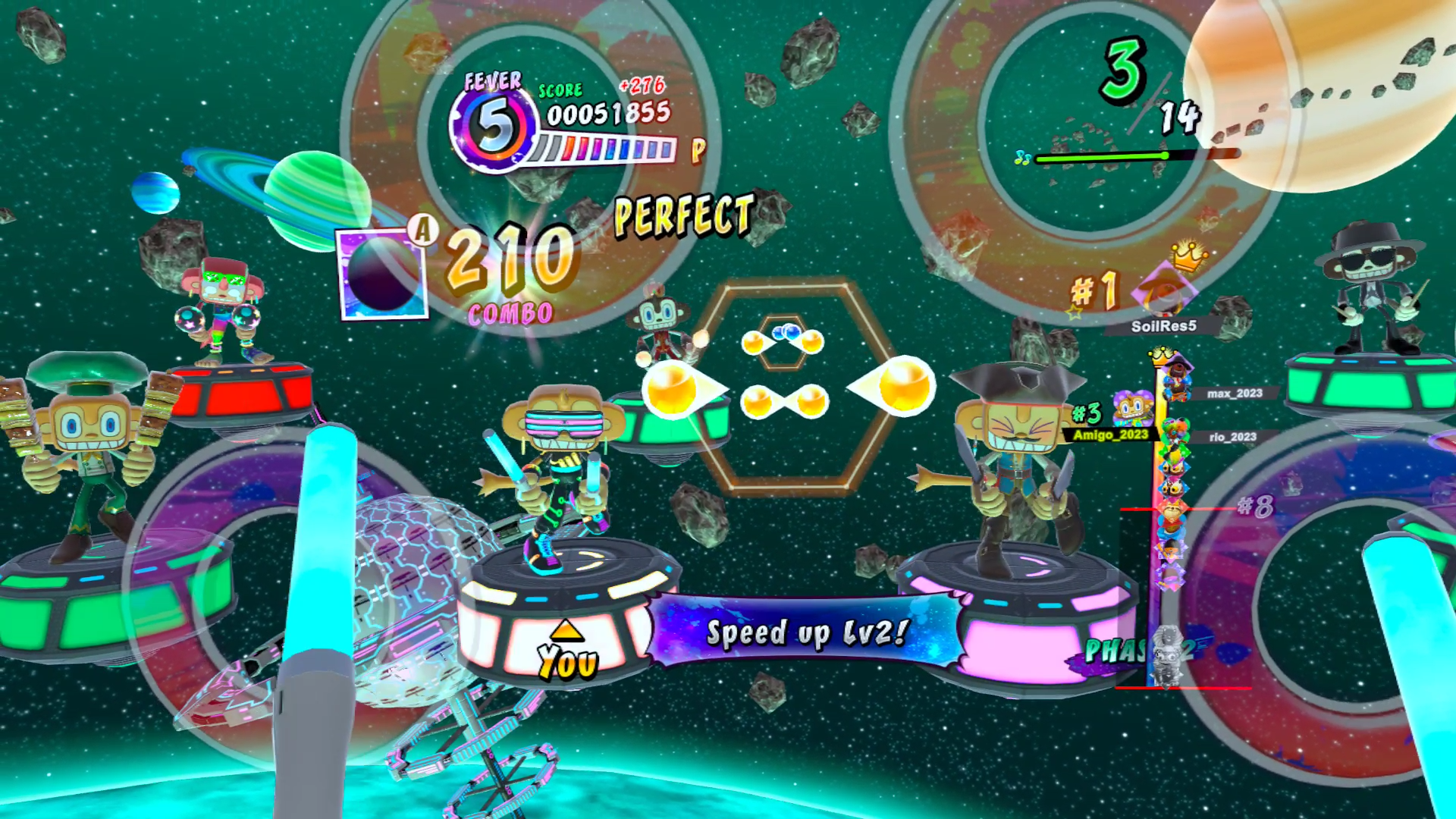
UploadVR: Given how prolific rhythm games are in virtual reality, did the team take inspiration from other VR games during development?
Nakamura: I have seen many other VR rhythm games. However, for this Samba de Amigo, we already had the original game and the general framework of the game system, so we were not greatly inspired by other rhythm games to make changes.
Having said that, I had no knowledge of VR (in comparison to rhythm games), so I did a lot of research on the expressions and mannerisms of other VR games that are not music games. I would like people to experience the part of the game that blends into the festival and the carnival scenes.
TikTok was a major inspiration for this Samba game, and we have included new elements such as “happenings” to make the Samba experience similar to the modern scene where young people get into the groove of the music and have fun, creating a picture that makes everyone laugh.
UploadVR: Was it a challenge translating Samba de Amigo's gameplay to first-person, and how does gameplay compare to the Switch game?
Nakamura: This was very difficult, and I struggled a lot. In Samba, there are six frames that are icons which follow the user's movements, but in VR, these frames are right in front of the user's eyes, and people have very different preferences in terms of distance. In addition, it was difficult to get the timing just right for the notes coming from the back to the front. As for the differences in gameplay between the Switch, the concept of the game being fun and groovy is exactly the same, but the Samba features, such as the world becoming more exciting if you keep playing well, are very different. However, the VR experience is a must-see for those who want to experience the unique features of Samba, which is that the world around you becomes the world of Samba de Amigo and the festival, and the scene changes dramatically as you get into the groove. The Amigos, when the fever gauge is maxed out are a must-see!
UploadVR: Was it a challenge translating Samba de Amigo's gameplay to first-person, and how does gameplay compare to the Switch game?
Nakamura: The contents of Quest and Switch are not exactly the same. I can't tell you now, but we have prepared some things that Quest players will enjoy, and we hope to be able to tell you about them in the future. However, the underlying game concept is the same for both games, and I believe that they are games you can enjoy with a groove and a sense of self-discovery. Each has its own merits, so I really hope that you will play both!
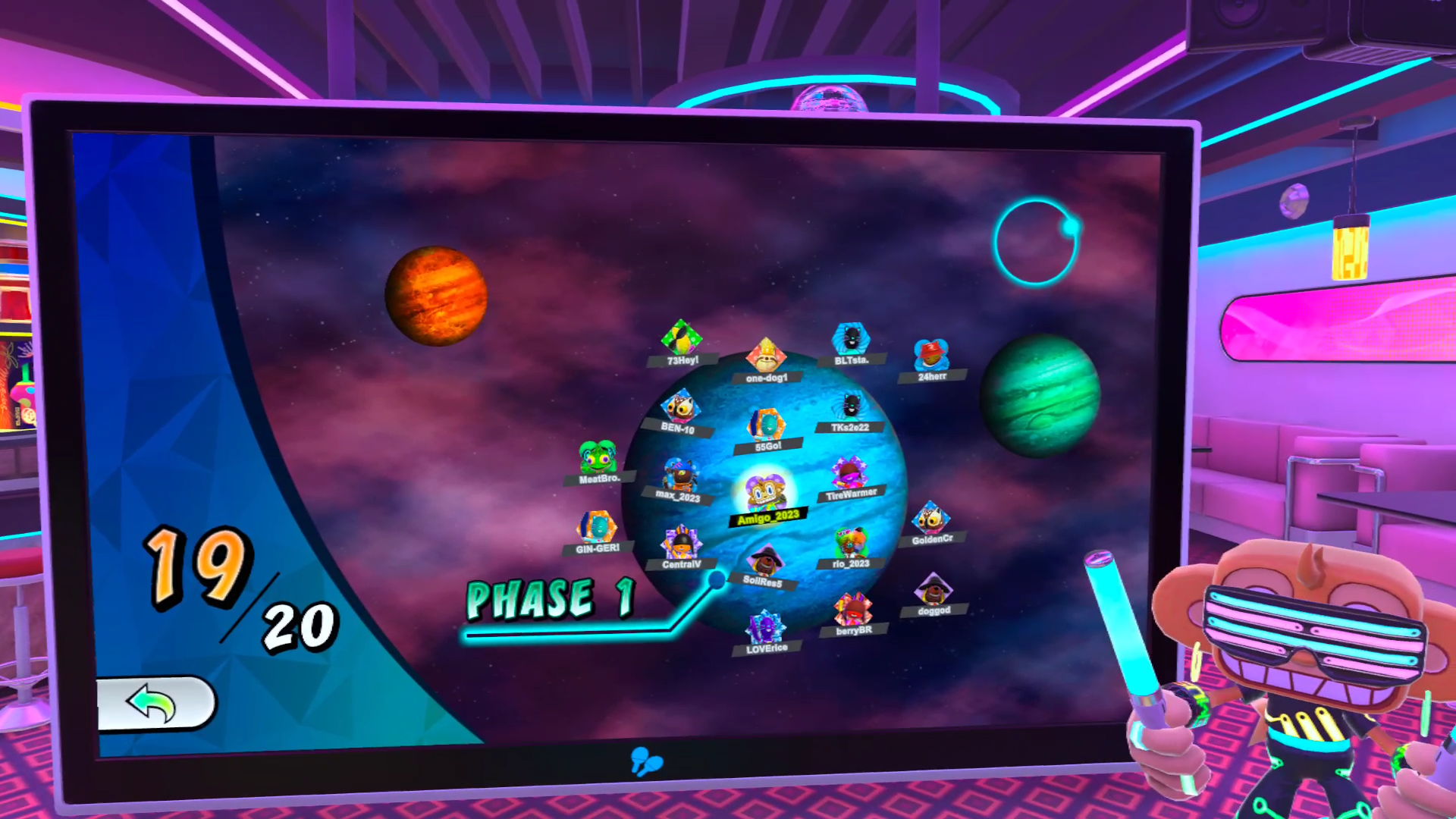
UploadVR: Are there any performance benefits for those playing on Quest Pro over Quest 2?
Nakamura: We hope to provide you with more information in the future!
UploadVR: As a fun question. If you could choose any SEGA game to bring to VR next, what would you pick?
Nakamura: This is my first experience in VR production, and I feel its potential even more. I am excited to see that Sega's various IPs will be able to offer a different kind of fun by moving into VR. But first, how will Samba de Amigo be accepted by everyone? I am looking forward to seeing how this will be received. This Samba will test you from the moment you turn on the game. As it was with the past Samba de Amigo games, rather than a cool and stylish game where you ride the music, I think this time we have created a game that will bring laughter and smile to anyone who plays it. I am sure it will be a great game, so please look forward to its release!

